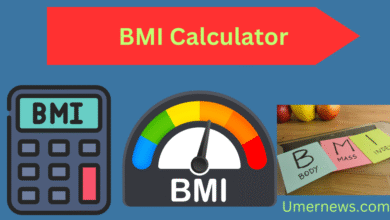Pace Calculator
Contents
- 1 Pace Calculator Tool
- 2 Pace Calculator: Your Secret Weapon for Smarter Running
- 2.1 What Is a Running Pace Calculator?
- 2.2 How to Effectively Use a Pace Calculator
- 2.3 Frequently Asked Questions About Running Pace
- 2.3.1 What is a good running pace for a beginner?
- 2.3.2 How do I calculate my average pace?
- 2.3.3 What’s the difference between pace and speed?
- 2.3.4 What is a “negative split” and how can a pace calculator help?
- 2.3.5 Why is my GPS watch pace different from my pace calculator results?
- 2.3.6 Can I use a pace calculator for other sports?
- 2.4 Conclusion
Pace Calculator

Pace Calculator Tool
Standard Pace Calculator
Finish Time Calculator
Pace Converter
Additional Tools
Multipoint Pace Calculator
Explanations & Tips
Pace is a measure of speed in a running or cycling context, typically expressed as time per unit of distance. For runners, it’s often min/km or min/mile. For cyclists, it’s more common to use speed (km/h or mph). This tool helps you convert between these.
Your Maximum Heart Rate (MHR) is approximately 220 minus your age. Training zones are percentages of your MHR:
- Zone 1 (50-60% MHR): Recovery & very light training.
- Zone 2 (60-70% MHR): Fat Burn & Aerobic endurance.
- Zone 3 (70-80% MHR): Aerobic fitness & building stamina.
- Zone 4 (80-90% MHR): Anaerobic Threshold, High-intensity training.
- Zone 5 (90-100% MHR): Max Effort & Peak performance.
World Records
| Distance | Men’s Pace (min/km) | Men’s Pace (min/mi) | Women’s Pace (min/km) | Women’s Pace (min/mi) |
|---|
Pace Calculator: Your Secret Weapon for Smarter Running
Running a race or just training for fun? Do you ever wonder if you’re on track to hit your goal? That’s where a pace calculator becomes your best friend. This simple but powerful tool takes the guesswork out of your runs, helping you understand the relationship between time, distance, and pace. Instead of just running and hoping for the best, a pace calculator gives you the data you need to train smarter and achieve your goals.
Whether you’re aiming for a new 5K personal record, trying to finish your first marathon, or simply looking to maintain a steady jogging speed, understanding your pace is key. In this post, we’ll dive into what a pace calculator is, why you should use one, and how to make the most of it to elevate your running game.
What Is a Running Pace Calculator?
A running pace calculator is a tool that computes your running pace (minutes per mile or kilometer), distance, or total time when you input two of the three variables. It’s an essential resource for runners of all levels because it provides a clear, mathematical view of your performance.
Think of it this way:
- Need to find your pace? Input your total time and the distance you ran. The calculator will tell you your average pace per mile or kilometer.
- Want to hit a specific time? Enter your target race distance and your goal finish time. The calculator will reveal the average pace you need to maintain to achieve that goal.
- Curious about distance? If you’ve been running at a consistent pace for a certain amount of time, you can input those values to find out exactly how far you’ve gone.
This makes a pace calculator incredibly versatile for both training and race day planning.
Why Every Runner Needs to Use a Pace Calculator
Using a pace calculator isn’t just about crunching numbers; it’s about gaining a competitive edge and boosting your confidence. Here’s why you should make it a part of your routine:
- Setting Realistic Goals: Before you even start a training cycle, a calculator can help you determine if your goal time is achievable based on your current fitness level.
- Strategic Training: Knowing the exact pace you need for a goal race allows you to structure your workouts with purpose. You can plan tempo runs, interval training, and long runs at the right speeds.
- Tracking Progress: By regularly checking your pace over a set distance, you can see tangible improvements over time. This can be a huge motivator!
- Race Day Execution: On race day, a pace calculator helps you avoid starting too fast and burning out. You can use it to create a split chart, which tells you what your time should be at each mile or kilometer marker to hit your goal.
How to Effectively Use a Pace Calculator
Whether you’re a beginner or an experienced runner, integrating a pace calculator into your routine is straightforward.
- Enter Your Data: Most calculators have simple input fields for distance, time, and pace. Enter the two values you know to solve for the third.
- Plan Your Workouts: Use the tool to figure out what pace you should hold for different types of runs, such as easy runs, tempo runs, or interval repeats.
- Create a Race Strategy: Before your next race, use the calculator to generate a split sheet. This is a list of your target times for each mile or kilometer, which you can write on your arm or a piece of paper to stay on track.
- Analyze Your Performance: After a race or a key training session, enter your final time and distance to calculate your average pace. Compare this to your goal to see where you were successful or where you can improve next time.
A good pace calculator will also offer options for different units (miles and kilometers), making it useful no matter where you live or what race you’re training for.
Frequently Asked Questions About Running Pace
What is a good running pace for a beginner?
A good running pace for a beginner is often a comfortable jogging speed, which might be anywhere from 10 to 12 minutes per mile (6 to 7.5 minutes per kilometer). The most important thing for a new runner is to find a pace that feels sustainable and allows you to hold a conversation. Consistency is more crucial than speed at this stage.
How do I calculate my average pace?
To calculate your average pace, you simply divide your total running time by the total distance you ran. For example, if you ran 3 miles in 30 minutes, your average pace is 10 minutes per mile. Many online tools and running apps do this calculation for you automatically.
What’s the difference between pace and speed?
Pace and speed are related but are measured differently. Pace is the time it takes to cover a specific distance, typically expressed in minutes per mile or kilometer. Speed is the distance you cover in a specific amount of time, usually shown as miles per hour (mph) or kilometers per hour (kph). Most runners and running coaches focus on pace because it’s a more intuitive metric for training.
What is a “negative split” and how can a pace calculator help?
A negative split is when you run the second half of your race faster than the first half. This is an advanced racing strategy that can lead to a personal record. A pace calculator helps by allowing you to create a target split sheet with a slightly slower pace for the first half and a faster pace for the second half, giving you a clear plan to execute.
Why is my GPS watch pace different from my pace calculator results?
Your GPS watch might show a slightly different pace because it calculates it in real-time, often fluctuating minute by minute based on your current speed. A pace calculator, on the other hand, gives you an overall average pace for a run based on the total time and distance, which can be a more accurate reflection of your overall effort.
Can I use a pace calculator for other sports?
Yes! While they’re most popular with runners, pace calculators can be used for any sport where you track time and distance. This includes cycling, swimming, rowing, or even brisk walking. The formula remains the same, making it a versatile tool for any endurance athlete.
Conclusion
A pace calculator is more than just a tool for numbers; it’s a crucial part of a smart, data-driven training plan. By using it, you can gain a deeper understanding of your running, set more realistic goals, and track your progress with confidence. It empowers you to take control of your training and race day strategy, turning your hard work into tangible results.
So, the next time you head out for a run, consider using a pace calculator to plan your workout or analyze your performance. How do you plan on using a pace calculator to improve your next run? Let us know in the comments!




